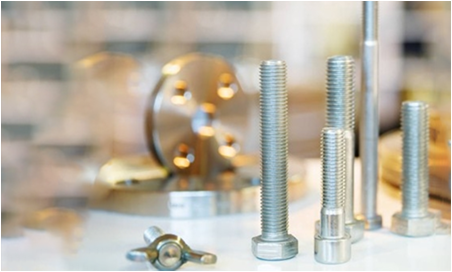Zář . 07, 2024 09:53 Back to list
Types of Bolts and Their Uses - Comprehensive Guide
Types of Bolts and Their Uses
Bolts are essential fasteners used in a wide variety of applications across different industries. They consist of a head and a shaft with external threads that allow them to be paired with a nut or driven directly into a material to secure objects together. Understanding the different types of bolts and their specific uses can greatly enhance the efficiency and effectiveness of construction and manufacturing processes.
1. Hex Head Bolts
Hex head bolts are among the most common types of bolts used in construction and machinery. They feature a hexagonal head, making them easy to grip with a wrench or socket. These bolts are typically used in structural applications, such as securing steel beams and other heavy materials. Their high tensile strength makes them suitable for demanding environments where durability and strength are critical.
2. Carriage Bolts
Carriage bolts have a round head and a square neck that prevents them from turning when a nut is tightened. They are primarily used in wood-to-wood or wood-to-metal applications, commonly in furniture construction and deck building. The smooth, rounded head provides a clean appearance, making them ideal for visible connections.
3. Lag Bolts
Lag bolts, also known as lag screws, are heavy-duty fasteners that provide superior holding power, particularly in wood. They have coarse threads and are usually installed with a wrench or socket. Lag bolts are ideal for securing wooden beams, braces, or heavy equipment in construction projects, making them a favorite among carpenters and builders.
types of bolts and their uses

Socket head cap screws are characterized by their cylindrical heads and internal hexagonal drive. They are designed to be used with an Allen wrench and provide a high level of torque and clamping force. These screws are often used in high-stress applications, such as machinery assembly and automotive components, due to their strength and reliability.
5. Eye Bolts
Eye bolts are distinctive with their circular eye-shaped head. They are commonly used for lifting and rigging applications, allowing objects to be secured and lifted with rope or cables. The design facilitates quick attachment and detachment, making them essential in both construction and industrial settings.
6. J-Bolts
J-bolts are shaped like the letter J and are often used to anchor structures to concrete. They provide a secure hold and are typically embedded into concrete during the curing process. These bolts are frequently seen in building foundations, securing columns and large structures in place.
7. Expansion Bolts
Expansion bolts are specifically designed for anchoring in masonry, brick, or concrete. They expand when tightened, providing a secure hold in materials that do not accommodate traditional bolts. Their versatility makes them ideal for various applications, including installing heavy fixtures and securing structural supports.
Conclusion
Understanding the different types of bolts and their respective uses is crucial for anyone involved in construction, manufacturing, or DIY projects. The right bolt can make a significant difference in the strength and integrity of a joint, ensuring that structures remain safe and functional. Whether you are building furniture, constructing a building, or undertaking repair work, selecting the appropriate bolt is key to achieving quality results. Always consider the specific requirements of your project when choosing the right fasteners, as this will ultimately contribute to the overall success and longevity of your work.


